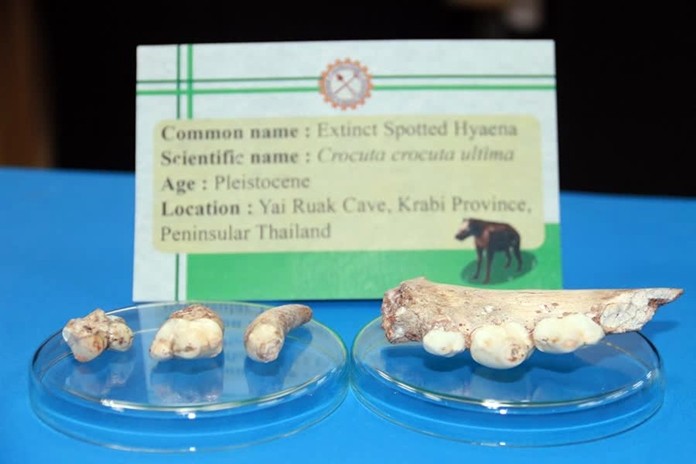
Bangkok – After discovering the fossilized remains of four species of large mammal, especially a dotted hyena at Yai Ruak Cave in Krabi, the Department of Mineral Resources will develop the location as a source of knowledge and a tourist attraction.
The four species discovered are a Malayan porcupine, sambar deer, Javan rhinoceros and spotted hyena. Sommai Techawal, Director-General of the Department of Mineral Resources, says the animals were initially estimated to have lived 80,000 to 200,000 years ago, in a period that is known as the early part of the late Pleistocene. It is considered important evidence of the farthest dispersion of hyenas found in Southeast Asia.
Kantaphon Suraprasit, a lecturer at the Department of Geology, Faculty of Science, Chulalongkorn University, said a research team had studied the dental enamel of the fossils. The analysis has confirmed that in the Pleistocene period, Krabi was dominated by savannah vegetation alternating with dense forest patches. This was a suitable path for the migration of mammals. There is also an assumption that the dispersion of hyenas into the region of what is now Krabi, was due to discontinuity of the Savannah route that was separated by rainforests in Sundaland throughout the Thai-Malaysian peninsula during the ice age in the Pleistocene period.
 |
 |
 |





